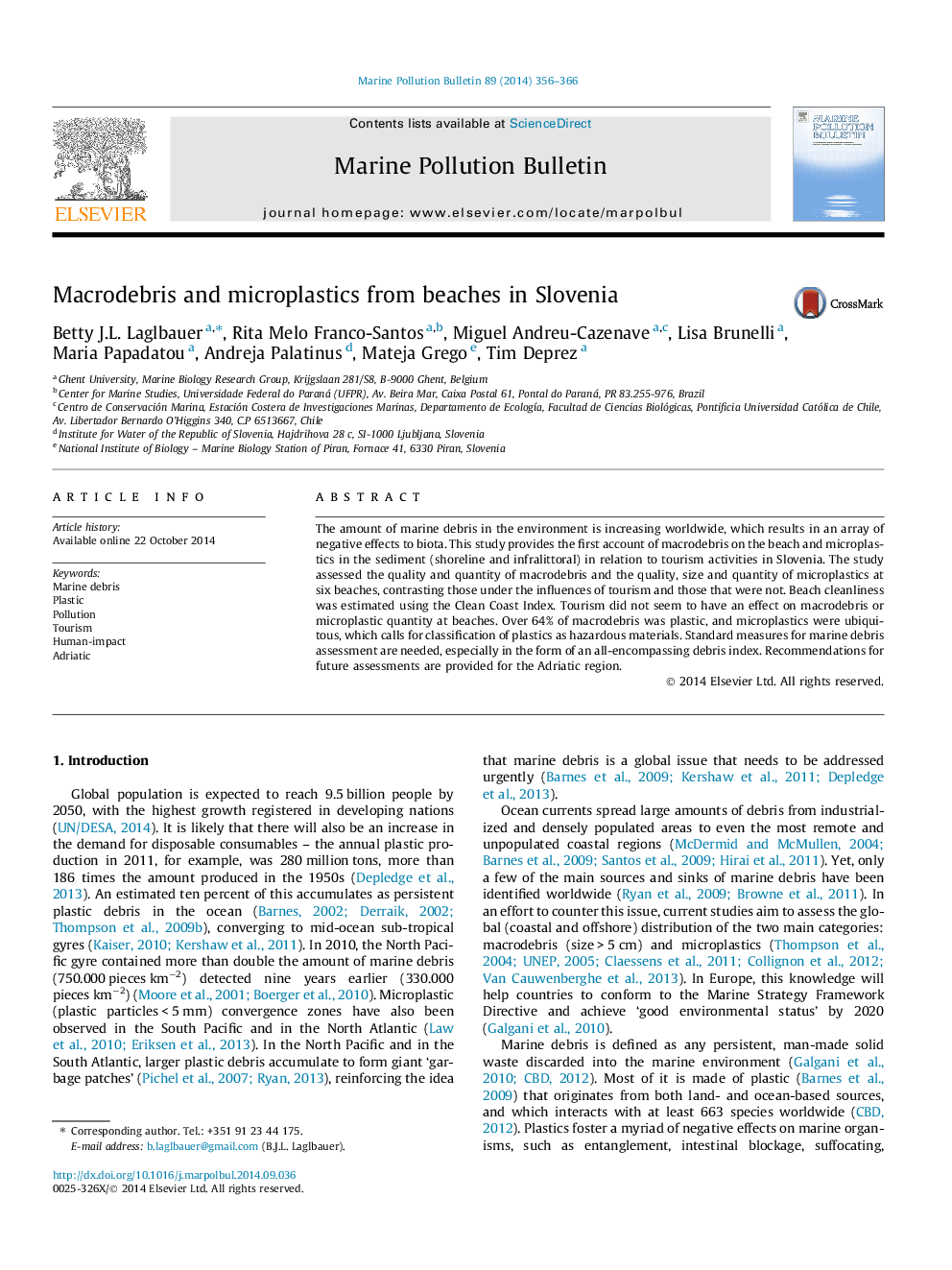| Article ID | Journal | Published Year | Pages | File Type |
|---|---|---|---|---|
| 6357934 | Marine Pollution Bulletin | 2014 | 11 Pages |
â¢Microplastics were assessed for the first time in Slovenia.â¢Most beached macrodebris were plastic.â¢Median microplastic concentration was higher in the infralittoral than in the shoreline.â¢Macrodebris and microplastic quantity did not differ between touristic and non-touristic beaches.
The amount of marine debris in the environment is increasing worldwide, which results in an array of negative effects to biota. This study provides the first account of macrodebris on the beach and microplastics in the sediment (shoreline and infralittoral) in relation to tourism activities in Slovenia. The study assessed the quality and quantity of macrodebris and the quality, size and quantity of microplastics at six beaches, contrasting those under the influences of tourism and those that were not. Beach cleanliness was estimated using the Clean Coast Index. Tourism did not seem to have an effect on macrodebris or microplastic quantity at beaches. Over 64% of macrodebris was plastic, and microplastics were ubiquitous, which calls for classification of plastics as hazardous materials. Standard measures for marine debris assessment are needed, especially in the form of an all-encompassing debris index. Recommendations for future assessments are provided for the Adriatic region.
